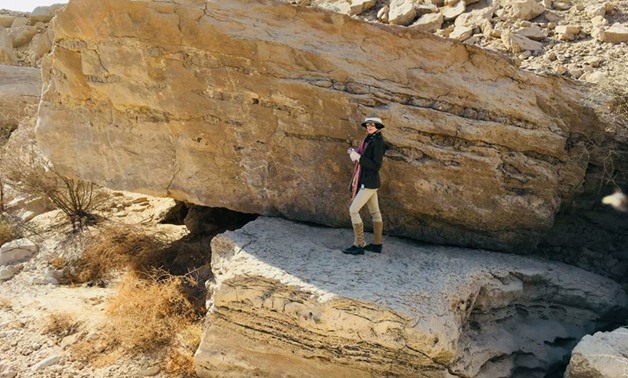
An Egyptian- American archaeological mission from Yale University uncoveredan archaeological site used in several eras as a quarry -Ministry of Antiquities’ official Facebook Page
CAIRO – 13 June 2018: An Egyptian- American archaeological mission from Yale University discovered an archaeological site, which was used in several eras as a quarry and a place for manufacturing flint in Elkab desert, Aswan, according to Ministry of Antiquities’ statement.
The archaeological site was found during the investigation of Bir Umm Tineidba area as part of the Elkab Desert Survey Project in Edfu city.
Ayman Ashmawy, head of the Ancient Egyptian Antiquities Sector at the Ministry of Antiquities, said that the mission discovered several rock slabs with paintings and inscriptions on them, some of which date back to the Predynastic and Protodynastic era, along with burial tumuli, some of which dating back to the Protodynastic Period, while others dating back to the Late Roman era.
Ashmawy referred that this site, known as the lost “Oasis” or the ancient well, is considered a very important archaeological and epigraphic site in the Eastern Desert, which was believed to be devoid of ancient remains.
In the same context, John Coleman Darnielen, head of the Yale University Mission, remarked that at least three rock slabs dated back to the Predynastic and Protodynastic era, with images of large depictions of animals, which areconsidered to be signs ofthe religious life in this era.
Darnielen stressed that the inscriptions represent the earliest forms of writing in ancient Egypt before the hieroglyphic writing was formed.
He added that the uncovered burial tumuli at Wadiof Umm Tineidba belong to desert dwellers, adding that one of them belongs to a 25-35-year old woman who was buried with a pot and a rope made of red sea shells and carnelian beads.

Comments
Leave a Comment